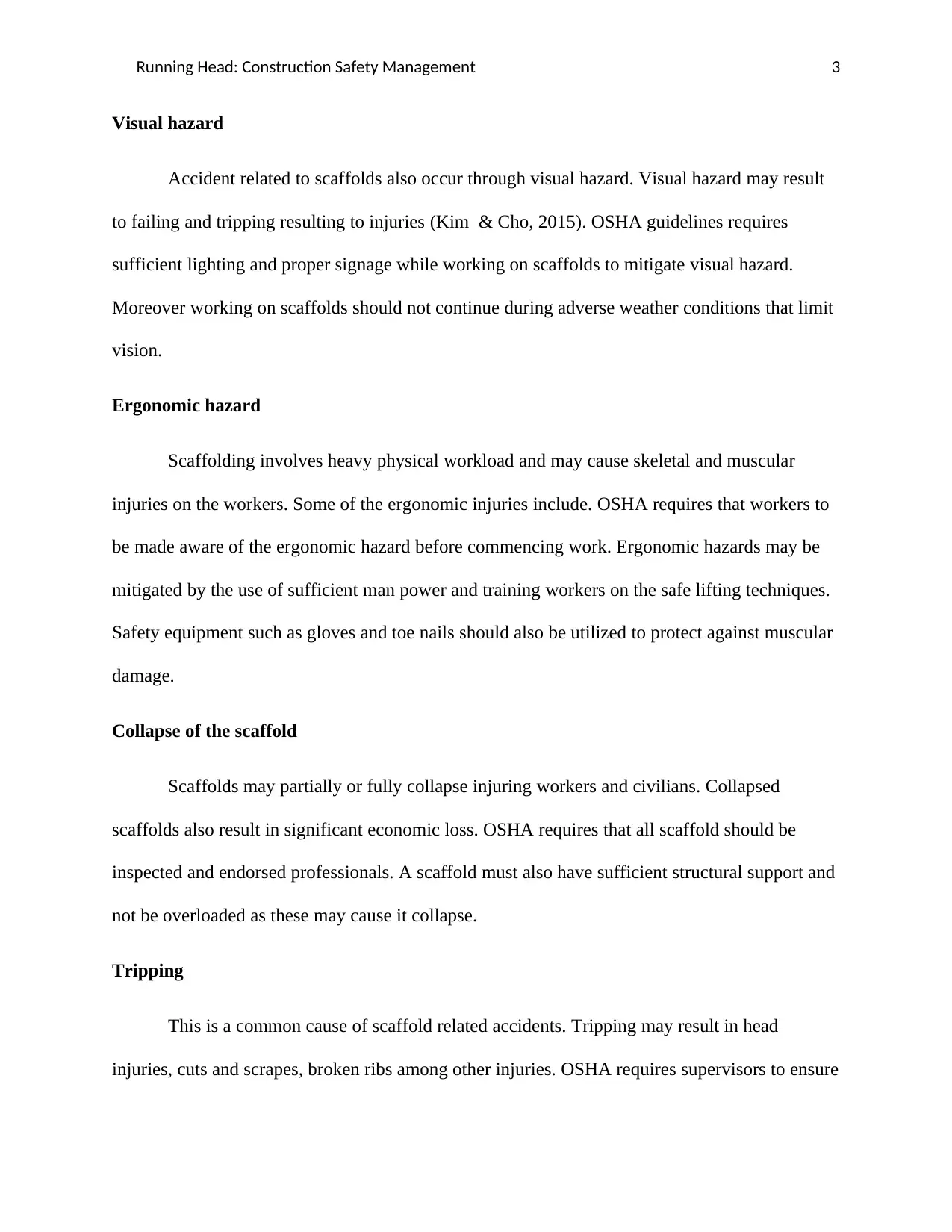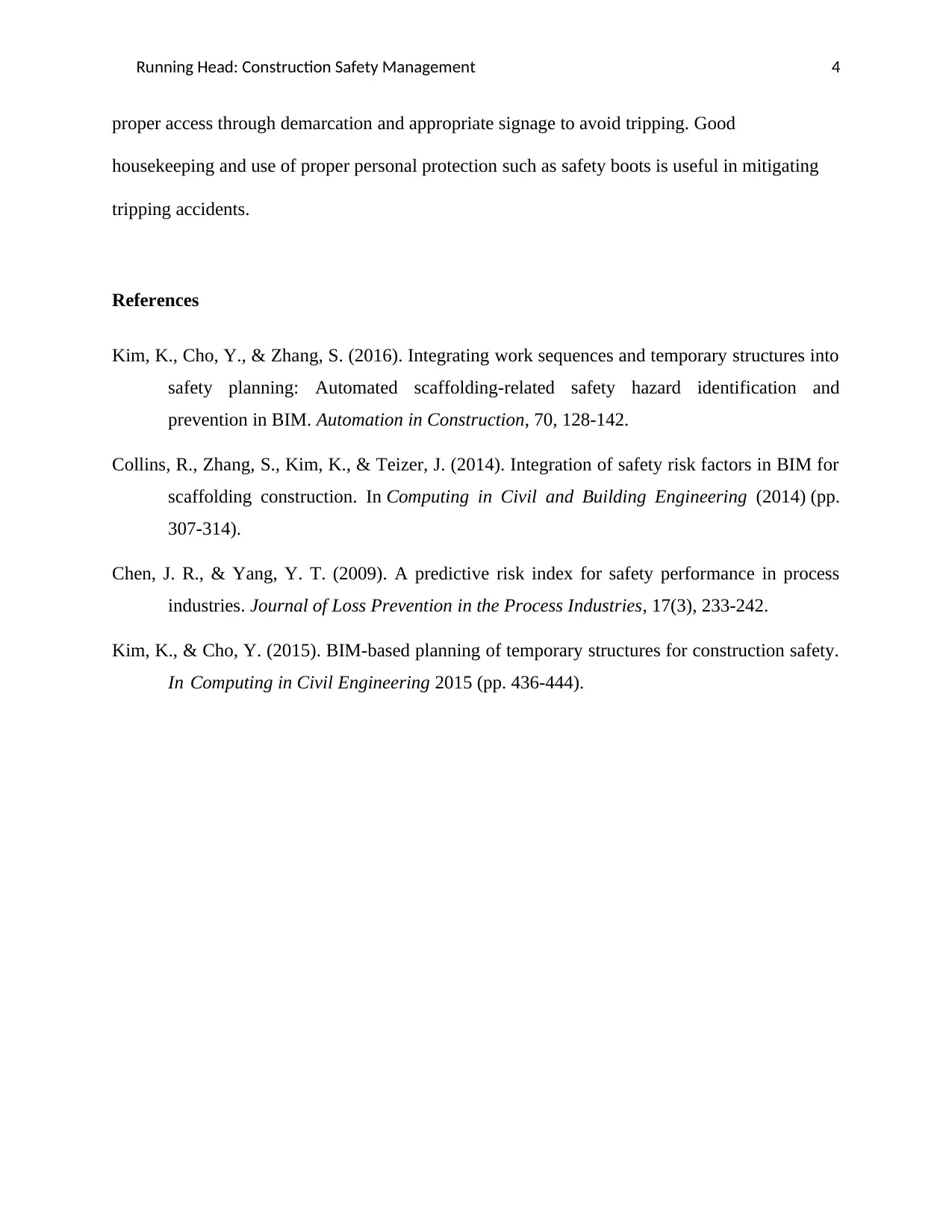Construction Safety Management Report: Scaffolding Hazard Mitigation
VerifiedAdded on 2023/04/22
|5
|804
|262
Report
AI Summary
This report focuses on construction safety management, specifically addressing the hazards associated with scaffolding operations. The report identifies six major categories of scaffolding hazards: falling, falling objects, visual, ergonomic, scaffold collapse, and tripping hazards. For each hazard category, the report details the risks involved, referencing OSHA guidelines for safety compliance. The report provides a comprehensive analysis of the hazards and suggests mitigation strategies, including the use of personal protective equipment, proper training, sufficient lighting, and structural support. The report emphasizes the importance of hazard identification, stakeholder awareness, and effective mitigation actions to prevent accidents and ensure worker safety in the construction industry. The report aims to provide a practical guide to construction professionals, with a focus on preventing economic losses and ensuring worker safety. For more resources like this, visit Desklib, your go-to platform for past papers and solved assignments.
1 out of 5








![[object Object]](/_next/static/media/star-bottom.7253800d.svg)